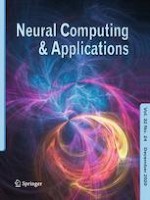27.05.2019 | WSOM 2017
Multidimensional urban segregation: toward a neural network measure
Erschienen in: Neural Computing and Applications | Ausgabe 24/2020
EinloggenAktivieren Sie unsere intelligente Suche, um passende Fachinhalte oder Patente zu finden.
Wählen Sie Textabschnitte aus um mit Künstlicher Intelligenz passenden Patente zu finden. powered by
Markieren Sie Textabschnitte, um KI-gestützt weitere passende Inhalte zu finden. powered by
